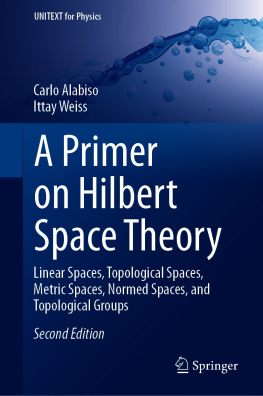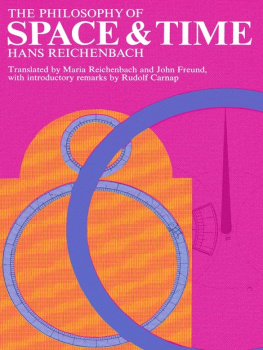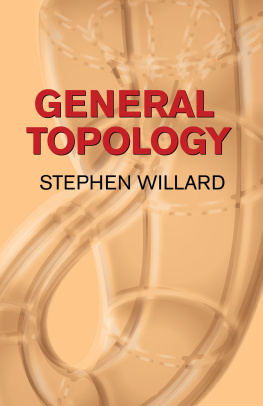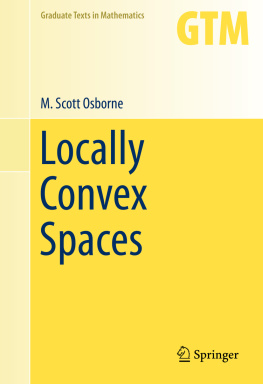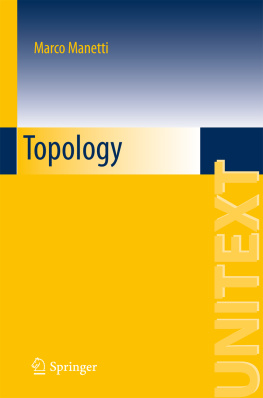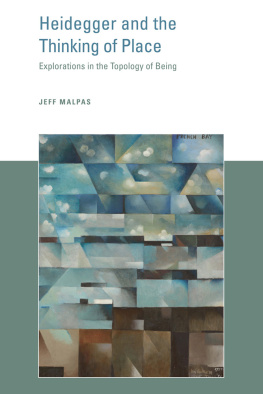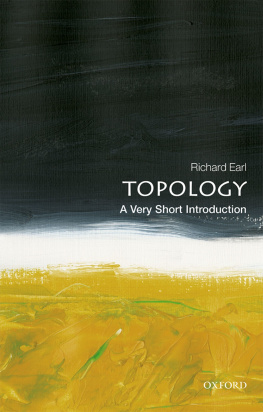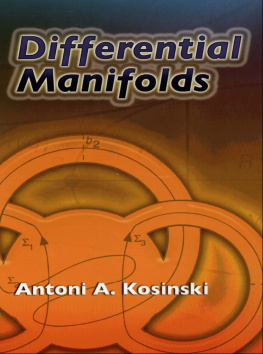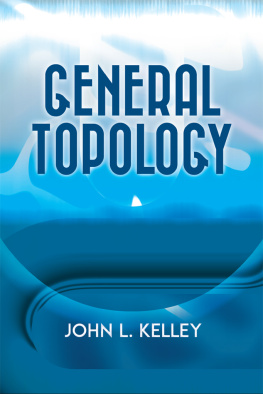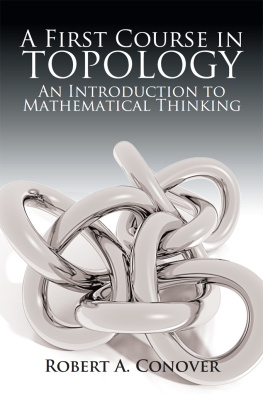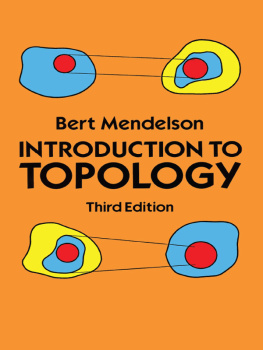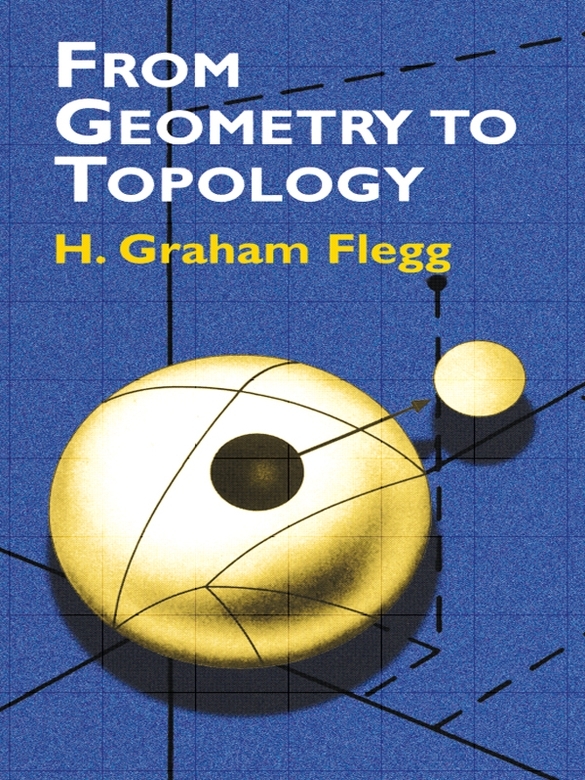I should like to acknowledge my indebtedness to Professor R. Brown, Dr. W. Martyn and Mr. M. Reeves who read the manuscript of this book and made many helpful suggestions, and to my colleague Peter Strain who read the proofs. Such errors and omissions as remain are entirely my responsibility and are in no way attributable to them.
I should like to express my gratitude to the Publishers for their great patience when heavy pressure of work at the Open University meant repeated but unavoidable delays in completing the necessary revision of the original manuscript, and also for producing the book in such a presentable format. My thanks are also due to the illustrators for their care and ingenuity in creating the figures which illustrate the written material, and to Mrs. Barbara Kehoe for transforming sheets of often untidy handwriting into an accurate typescript.
Finally, I must record my thanks due to my friend and former colleague, Charles Barker, from whom I received the original inspiration for the course of lectures at Bangor out of which this book has eventually grown.
H. G. F.
Bibliography
Blackett, D. W. Elementary Topology (Academic Press).
Brown, R. Elements of Modern Topology (McGraw Hill).
Cairns, S. S. Introductory Topology (Ronald Press).
Hocking, J. G. and Young, G. S. Topology (Addison-Wesley).
Kelley, J. L. General Topology (Van Nostrand).
Lefschetz, S. Introduction to Topology (Princeton University Press).
Lipschutz, S. Theory and Problems of General Topology (Schaum).
McCarty, G. Topology (McGraw-Hill).
Manheim, J. H. The Genesis of Point Set Topology (Pergamon).
Mansfield, M. Introduction to Topology (Van Nostrand).
Mendelson, B. Introduction to Topology (Blackie).
Patterson, E. M. Topology (Oliver and Boyd).
Pitts, C. G. C. Introduction to Metric Spaces (Oliver and Boyd).
Simmons, G. G. Introduction to Topology and Modern Analysis (McCraw-Hill).
Sze-Tsen Hu. Elements of General Topology (Holden-Day).
Wallace, A. H. An Introduction to Algebraic Topology (Pergamon).
Historical Note
In the study of the development of man two main influences are recognized to have played and to continue to play decisive roles environment and heredity. In a similar manner it is possible to discern both external and internal stresses at work shaping the genesis and growth of mathematical ideas. New branches of mathematics come into being, not because they are created overnight out of nothing by some individual genius, but because the soil has been prepared over the previous decades (or even centuries) and because some internal or external stress (or perhaps a combination of both) provides the appropriate impetus and motivation at the crucial point in time. More often than not, it is the case that several minds produce independently and almost simultaneously the germs of what subsequently develops into a new theatre of mathematical investigation. For this reason it is usually ill-advised to point to any one man as being the founder or inventor of any particular branch of mathematics.
In the case of topology it is possible to see two particular and apparently quite separate areas of mathematics as providing much of the fertile soil out of which topology as a topic in its own right was to grow the development of the calculus and the formulation of non-Euclidean geometries.
Some of the ideas which we today accept as commonplace in the study of the calculus can be traced back to the attempts of the Greeks to determine areas and volumes by the method of exhaustion. Newton and Leibniz put the calculus on its modern footing through their work on differentiation and integration showing the link between the two processes, and by providing appropriate notation by means of which problems involving rates of change could be formulated mathematically. However, the expositions of Newton and Leibniz created a number of difficulties which neither they nor their immediate followers were able to resolve. Many of these difficulties centred upon the fundamental concept of limit. The limit concept, essential to a proper understanding of the calculus, is inexorably tied to the concept of nearness, and in the late seventeenth and early eighteenth centuries the various interpretations of the term limit led to a number of conflicting principles which could be resolved only by some new approach allowing the concept to be restated in an unambiguous and rigorous manner.
The motivation for much of the basic investigation of the fundamentals of the calculus came from a number of physical problems of which the problem of the vibrating spring is a typical example. A purely internal motivation arose from the discovery of pathological curves which highlighted the distinction between continuity and differentiability and undermined the purely visual approach to the study of functions. Such investigations brought into prominence the need for a much more sophisticated method for the abstract formulation of mathematical problems which was only to become available with the advent of Cantors theory of sets.
One of the major constraints under which mathematicians of these earlier days had to work was the over-riding veneration paid universally to the geometry of Euclid. Until the stranglehold of purely Euclidean concepts could be broken there was little chance that developments necessary for continuing the investigations into the foundations of the calculus could take place. It was the geometries of Lobachevsky and Riemann that provided exactly the release from Euclidean thraldom that was needed. In particular, it had been universally accepted for many centuries not only that Euclidean geometry was founded upon an unshakable axiomatic basis but also that it uniquely represented the real world in which all physical problems were assumed to arise. If the various non-Euclidean geometries had proved to be nothing more than impractical mathematical abstractions, it is doubtful if the necessary break from a purely Euclidean concept of space would have been achieved at the crucial moment; it was the realization that some of these geometries applied to practical and easily visualizable situations, such as geometry on the surface of a sphere, that set mens minds free and led to rapidly developing investigations into the nature of spaces, which continue until the present day.
The theory of point sets revolutionized the whole approach to the investigation of the nature of spaces by enabling it to be carried out in terms of sets of points having certain prescribed properties, and the rise of functional analysis, which led to the introduction of Hilbert and Banach spaces, underlined the importance of this mode of approach. The Euclidean distance function was, of course, used extensively in the definition of the important concept of neighbourhood, but early in this present century Hausdorff built up a theory of abstract spaces using a definition of neighbourhood presented entirely in set theoretic terms and not dependent upon the introduction of a metric.
The purely combinatorial aspects of topology may be said to go back to some of the geometrical work of Leibniz in which he sought to formulate basic geometrical properties of figures in terms of location rather than magnitude. Some seventy years later Euler was concerning himself with the relation between the numbers of edges, faces and vertices of closed convex polyhedra and also with the famous Koenigsberg Bridge problem. During the nineteenth century Moebius and Riemann pioneered the detailed study of surfaces and, in particular, Riemann linked the study of functions with the theorems of what was at the time known as analysis situs.


